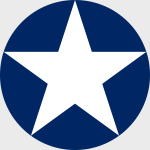Hobby Master HA7007 USMC Brewster F2A-3 Buffalo Fighter - Captain William C. Humberd, VMF-221, Midway, June 1942 (1:48 Scale)
"Why should we have a navy at all? There are no enemies for it to fight except apparently the Army Air Force."
- General Carl Spaatz, Commander of the US 8th Army Air Force, after WWII
 Built by the Brewster Aeronautical Corporation in Queens, New York City, the F2A Buffalo was the first production monoplane fighter to enter service with the US Navy. The F2A was an all-metal, single-engine, single-seat, mid-wing monoplane with retractable landing gear and a tail hook for carrier operations. The control surfaces, i.e., ailerons, elevators and rudder, were metal framed but covered with fabric. The struts of the hydraulically-operated landing gear retracted into the underside of the wing while the wheels fitted into the stubby fuselage below the wings. The tail hook was fully retractable into the rear fuselage while the tail-wheel partially retracted into the rear fuselage. Because of its short wingspan, the F2A did not need a folding wing configuration to be accommodated on U.S. aircraft carriers.
Built by the Brewster Aeronautical Corporation in Queens, New York City, the F2A Buffalo was the first production monoplane fighter to enter service with the US Navy. The F2A was an all-metal, single-engine, single-seat, mid-wing monoplane with retractable landing gear and a tail hook for carrier operations. The control surfaces, i.e., ailerons, elevators and rudder, were metal framed but covered with fabric. The struts of the hydraulically-operated landing gear retracted into the underside of the wing while the wheels fitted into the stubby fuselage below the wings. The tail hook was fully retractable into the rear fuselage while the tail-wheel partially retracted into the rear fuselage. Because of its short wingspan, the F2A did not need a folding wing configuration to be accommodated on U.S. aircraft carriers.
The Buffalo entered squadron service in the summer of 1940 and it was not long before three serious defects were identified. The first was the landing gear; it was not strong enough for carrier operations. Brewster strengthened two weak struts but a real fix would require a redesign of the aircraft. The second defect was identified by reports from Europe which indicated that the Buffalo did not meet the performance criteria of other aircraft then in combat, e.g., armor protection, self sealing fuel tanks, etc. Armor protection was added to the F2A-3 resulting in a heavier, unstable aircraft. One solution was to use a more powerful Pratt & Whitney engine but this would require a redesign of the aircraft. The third problem was the Brewster company management who had a habit of promising more than they could deliver resulting in serious delays in the deliveries of the aircraft. The final straw came when the Navy realized that the Grumman F4F-3 Wildcat was a superior aircraft in virtually every respect so no further Buffalos were ordered.
Pictured here is a 1:48 scale replica of a USMC Brewster F2A Buffalo fighter assigned to VMF-221, and piloted by Captain William C. Humberd, at the Battle of Midway during June 1942.
Sold Out!
Dimensions:
Wingspan: 8-3/4-nches
Length: 6-1/2-inches
Release Date: August 2008
Historical Account: "Call Forth the Demons" - The first air attack during the Battle of Midway occurred on June 3rd, by nine B-17s operating from Midway against the Japanese transport group. Though hits were reported, none of the bombs actually landed on target and no significant damage was sustained. Early the following morning, the Akebono Maru sustained the first hit when a torpedo from an attacking PBY struck her around 01:00. Vice Admiral Chuichi Nagumo launched his initial attack wave (108 aircraft) at 04:30 on June 4th. At the same time, he launched eight search aircraft (one 30 minutes late due to technical issues, and one which was forced to turn back), as well as his combat air patrol.
Japanese reconnaissance arrangements were flimsy, with too few aircraft to adequately cover the assigned search areas, laboring under poor weather conditions to the northeast and east of the task force. Now, Yamamoto's faulty dispositions came home to roost.
American radar picked up the enemy at a distance of several miles and interceptors soon scrambled. Unescorted bombers headed off to attack the Japanese carrier fleet, their fighter escorts remaining behind to defend Midway. At 06:20, Japanese carrier aircraft bombed and heavily damaged the U.S. base on Midway. Midway-based Marine fighter pilots, flying obsolescent Grumman F4F Wildcats and obsolete Brewster F2As, made a defense of Midway and suffered heavy losses. Most were downed in the first few minutes, and only two remained flyable. American anti-aircraft fire was accurate and intense, damaging many Japanese aircraft and claiming a third of the Japanese planes destroyed. The Japanese learned the island's bombers had already departed, and the strike leader signaled Nagumo another attack would be necessary to neutralize Midway's defenses before troops could be landed on June 7th; American bombers still could use the airbase to refuel and attack the Japanese invasion force.






![USAF Boeing F-15C Eagle Multi-Role Fighter - "Gulf Spirit", 33rd Tactical Fighter Wing, Eglin AFB, Operation Desert Storm, 1991 [Low-Vis Scheme] (1:72 Scale)](http://cdn4.volusion.store/qh9e9-jdqv9/v/vspfiles/photos/HA4554-1.jpg?v-cache=1740197136)


